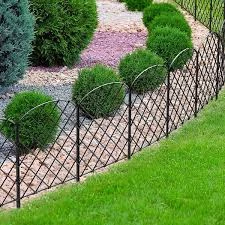The Essential Guide to Chain Link Fence Posts and Rails
When it comes to creating a functional and secure outdoor space, few options match the versatility and durability of chain link fencing. This type of fencing has become popular in both residential and commercial applications for its various benefits, including affordability, visibility, and easy installation. Central to the structure of chain link fencing are the posts and rails, which play a critical role in ensuring stability and effectiveness.
Understanding Chain Link Fence Posts
Chain link fence posts are pivotal in establishing the framework of the fence. Typically made from galvanized steel or aluminum, these posts are designed to provide strength and durability. There are generally three types of posts used in chain link fencing terminal posts, line posts, and corner posts.
- Terminal Posts These posts are positioned at the ends of a fence line and are vital for anchoring the fence. They support the highest tension as they are where the chain link is secured, making them thicker and sturdier than other post types.
- Line Posts These are placed between terminal posts at regular intervals. They maintain the vertical alignment of the fence and provide support for the fence fabric. Usually placed 10 feet apart, line posts contribute to the overall strength of the fence structure.
- Corner Posts As the name suggests, corner posts are used to anchor the fence at corners. They need to withstand more stress than standard line posts due to the change in direction of the fence.
Choosing the right type of post is crucial. The height and spacing depend on the specific requirements of your fencing project, including the local regulations and the purpose of the fence—whether it’s for privacy, security, or simply to enclose a garden.
The Role of Rails in Chain Link Fencing
Rails serve as the horizontal components of the chain link fence, connecting the posts and providing additional support
. There are typically two types of rails used- Top Rails These are the uppermost horizontal support fixtures. They not only help maintain the fence's shape but also offer additional strength, preventing the chain link fabric from sagging.
chain link fence posts and rails

- Bottom Rails Not always necessary, bottom rails can provide further support and stability. In many installations, particularly where there are pets or small children, a bottom rail can prevent the fence from being pushed outwards and keep the chain link fabric tight against the ground.
High-quality rails are usually made from steel and should be well-coated to withstand the elements. It’s essential to ensure that rails are level during installation for optimal performance.
Installation Considerations
Proper installation of chain link fence posts and rails is crucial for achieving a sturdy and long-lasting fence. Here are some tips to consider
1. Planning Before beginning installation, plan the fence layout, noting the locations for each type of post.
2. Digging Holes For terminal and corner posts, deep anchoring is necessary—usually about a third of the post height should be buried underground, with a sufficient concrete base for added stability.
3. Alignment Ensure that all posts are aligned vertically and horizontally, as any deviations could lead to weakness in the structure.
4. Tensioning the Fabric Once the posts and rails are installed, it is essential to pull the chain link fabric taut before securing it to ensure a neat and functional finish.
Conclusion
Chain link fence posts and rails form the backbone of a reliable fencing solution. Their proper selection and installation are crucial not just for durability, but also for ensuring that the fence serves its intended purpose. Whether you’re securing a backyard, enclosing a commercial property, or even marking the boundaries of your garden, understanding these components is key to a successful fencing project. Investing time and attention into the foundation of your chain link fence will lead to a long-lasting and effective barrier.
















